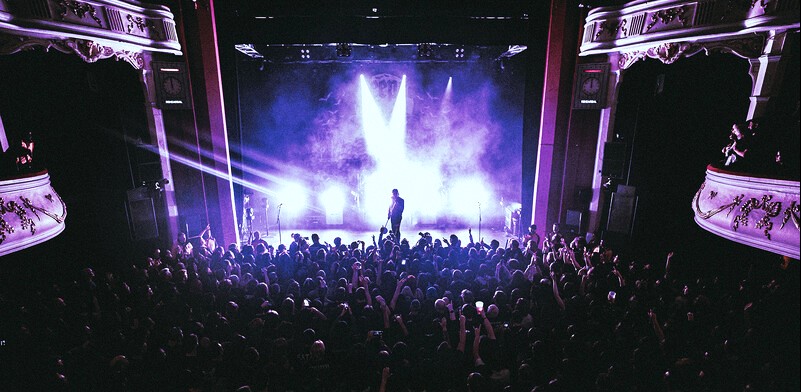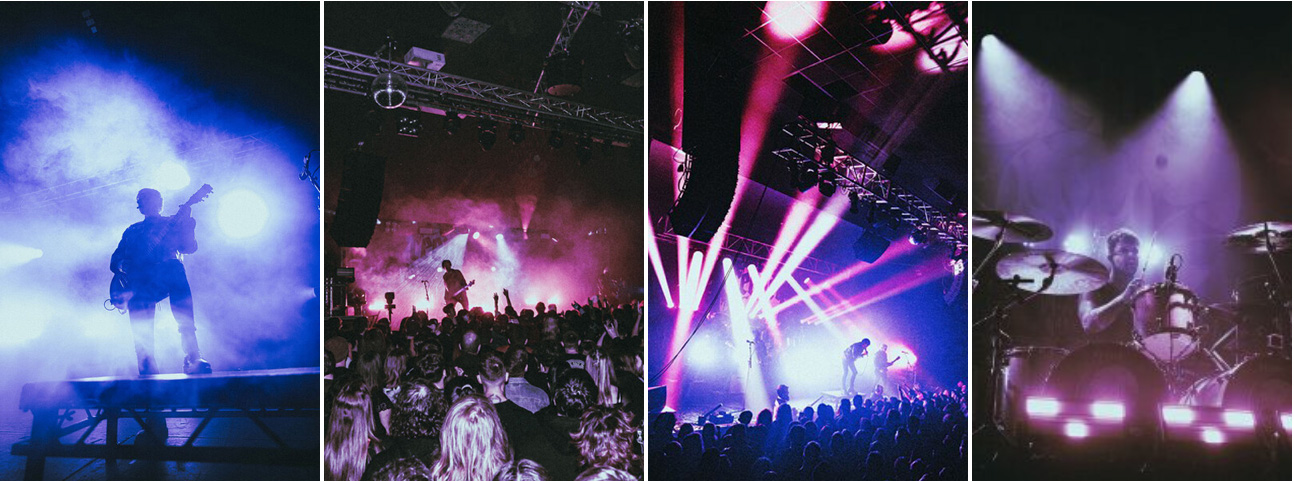Hayden Borgars The Musicality of Lighting Fixtures
Posted on January 8, 2024 “I am part of light, and it is the music,” wrote Nickola Tesla, who once likened a single lightning bolt to a sonata. All lighting designers would likely agree, attuned, as they are, to hearing the transformative sound made by infinite photons every night on stage. Inspired by this magical harmony, Hayden Borgars strives to treat his lighting fixtures as musical instruments.
“I am part of light, and it is the music,” wrote Nickola Tesla, who once likened a single lightning bolt to a sonata. All lighting designers would likely agree, attuned, as they are, to hearing the transformative sound made by infinite photons every night on stage. Inspired by this magical harmony, Hayden Borgars strives to treat his lighting fixtures as musical instruments.
The London-based Knights of Illumination nominated designer, follows a “symphonic” approach to lighting shows, intent not only to follow the music, but also, whenever possible, to match it note for note, so each pixel mapped effect is synced to a drum beat or keyboard stroke.
A devotee of Chiaroscuro design, Borgars also coxes musicality out of dark spaces and shadows. He has followed this philosophy to stunning effect for The Ghost Inside, Mimi Webb,
Fever 333, Spiritbox, Hoodie Allen, Kurt Vile, Gang Of Youths, Scarlxrd, Wargasm, and more recently on Creeper’s Sacred Blasphemy UK tour.Borgars spoke to us to share his ideas on the musicality of light.
When discussing your work for Creepers, you told us that you tend to work lighting fixtures as if they were musical instruments. Can you elaborate on what you meant by that?
“I’ve always used light as if it were an additional musician onstage. When programming I’d start by layering. I’d create a base look for each moment within each song, and then use light, color and movement as a musical accent to emphasize any particular notes, chords or vocal lines.
”Indeed, in the Creeper’s Sacred Blasphemy tour you did this by pixel mapping lights to the keyboardist’s notes. Does pixel mapping making it easier to treat lights as musical instruments?“
The ability to pixel map over fixtures is incredibly important for me to achieve this result, and be as effective as possible regardless of size of venue or production with each design. With Creeper in particular being able to highlight Hannah Greenwood’s key notes across multi cell fixtures is vital to have that impact and capture that. A lot of the time this will be in a bridge or a pre-chorus that doesn’t necessarily require any movement or fast paced changes.”

What do you think that matching lighting to the music from a particular instrument this way adds to a show?
“Matching lighting to the music enhances the entire atmosphere for the show. It helps to captivate the audience and set the tone for each song. Using light and colour within the space can help to engage the audience and create intimacy. If the band are taking their audience on a journey with the songs and their lyrics then I also want to achieve this with my use of light too. I like to ensure this happens not just during the set but as soon as the audience enter the venue with an entire experience that uses all senses. In the past I’ve also used incense to add a scent to the show too.”
Do you get together with musicians to coordinate how you are going to match their music to lights?
“Typically, I’ll be sent the tracks way in advance to program and timecode. I like to be able to learn the songs inside out, as if I was rehearsing to play them myself, before I start to program.
Do you have to busk to match music to lights?
“This completely varies depending on the band and their style of music. If there’s a lot going on in each song then timecoding to achieve this is necessary to capture and layer every moment and note that requires any emphasis.
You like Chiaroscuro style lighting. Can you bring musicality to darkness?
“For me musicality is all about creating with emotion and atmosphere in mind. Darkness can just as easily achieve this as light. The interplay between light and darkness used within Chiaroscuro lighting is an incredibly powerful tool for me to convey emotion and build on the atmosphere within the music and performance. I also use Chiaroscuro lighting to highlight particular moments in a song that need to be emphasized. This could be a moment where it’s just one of the musicians playing on their own before the rest of the band come in. Using this style adds depth to that moment within the space.”
How do you balance other needs of lighting design, such as front lighting or audience lighting with the goal of matching music with your lights?
“Balancing light and darkness allows me to make bringing the audience in during any choruses or interaction and contrast it to the rest of the show. Generally, I keep front lighting to a minimum and stick with side light, instead of light the band head on. Typically, I do this in the same colour palette to complement each track and tone in ways that achieve visibility for the audience.”
Do you have a favorite instrument to match your lights to?“
Drums and Keys is what I tend to start programming to first. Using light as a musical instrument it’s crucial to have good rhythm and keep in sync with what they’re playing onstage.”